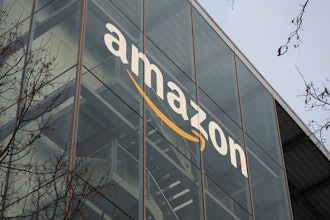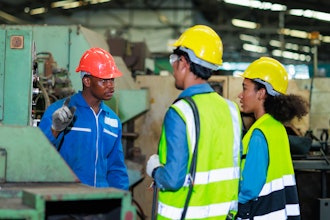Happy Manufacturing Day!
Manufacturing Day is a celebration of manufacturing and more importantly it is meant to inspire the next generation of manufacturers and their workforces! This annual event is instrumental in educating the public about the manufacturing industry, highlighting its many positive attributes, and hopefully, helping overcome some common misconceptions about the industry in an effort to raise awareness about the incredible career opportunities available within manufacturing.
According to recent research, 90 percent of Americans believe that manufacturing is very important to economic prosperity. Additionally, Americans support manufacturing job creation, ranking “manufacturing facilities” as No. 1 on their list of where they would create new jobs in their community if given the opportunity. So it seems that manufacturing as an industry is viewed as a critical part of the American economy by most.
Yet at the same time, it seems that most Americans don’t know much about the manufacturing industry. According to a recent survey commissioned by Kronos Incorporated and conducted online by Harris Poll, more than 50 million Americans have limited to no knowledge about the manufacturing industry. The little knowledge they do have often leads to perceptions of manufacturing work environments as manually labor intensive, often grimy, where advanced education and skills aren’t necessary. These perceptions don’t meet the realities of modern manufacturing but it’s clear that more education is needed as, according to another study conducted by Deloitte and The Manufacturing Institute “only 37 percent of respondents said they would encourage their children to pursue a manufacturing career”.
With not enough younger workers considering careers in manufacturing, and the pending “Silver Tsunami”, whereby a large number of Baby Boomer employees are expected to retire over the coming years, the skills gap is widening. Over the next decade, 3.4 million manufacturing jobs will need to be filled with about 2 million of those expected to remain vacant. This predicament will significantly hinder manufacturers’ ability to meet consumer demand, compete in a global marketplace, and grow their businesses. It’s clear that the time for action is now.
What can manufacturers do now to address the growing skills gap and better position themselves for future success? More specifically, what best practices can they implement now to improve their recruiting efforts?
Manufacturing Day Pays Off
One small step is simply participating in Manufacturing Day, when manufacturers can host students, teachers, parents, and job seekers to teach them more about modern manufacturing technology and the many fulfilling jobs they have to offer. Company representatives also partner with STEM programs (science, technology, engineering, and mathematics) to show how jobs in their industry use these specific skills each and every day.
All of this is designed to shift the public’s perception of the industry — and it all has a positive impact. For example, after participating in a Manufacturing Day event, 81 percent of student respondents reported that they are more convinced that manufacturing provides careers that are both interesting and rewarding.
What Else Can Manufacturers Do Now?
There is also another way manufacturers can improve the way they attract, recruit, and retain top talent: more effective human capital management and workforce management processes and solutions.
These technologies give manufacturers a proven way to optimize how they engage their most valuable asset — their employees, leading to increased employee satisfaction, and ultimately, retention. For example, mobile workforce management applications can automate scheduling processes, helping manufacturers balance production requirements while enabling employees to have control and flexibility over their schedules, so they can maintain a work-life balance. Workforce management solutions also go beyond the needs of today by enabling managers to proactively plan for tomorrow. With visibility to actual performance data and trends, managers can monitor high performers and identify best practices, which can be used to train others, enabling continuous improvement.
At the same time, managers can ensure that the highest performing and highest potential individuals are identified for knowledge transfer, retention and succession planning, furthering efforts to improve employee engagement by providing opportunities for development and advancement.
It’s a fact that improving employee engagement helps manufacturers improve productivity. According to the Harvard Business Review, those organizations with higher levels of employee engagement are 22 percent more productive. Plus, increasing employee engagement also helps manufacturers find and retain top talent — all of which significantly minimizes the adverse effects of the skills gap.
By taking part in public awareness building efforts and implementing creative solutions, manufacturers can improve the way they attract the new generation of skilled workers and achieve better results — now and well into the future.
Kylene Zenk-Batsford is director of the manufacturing practice group at Kronos Incorporated.






















